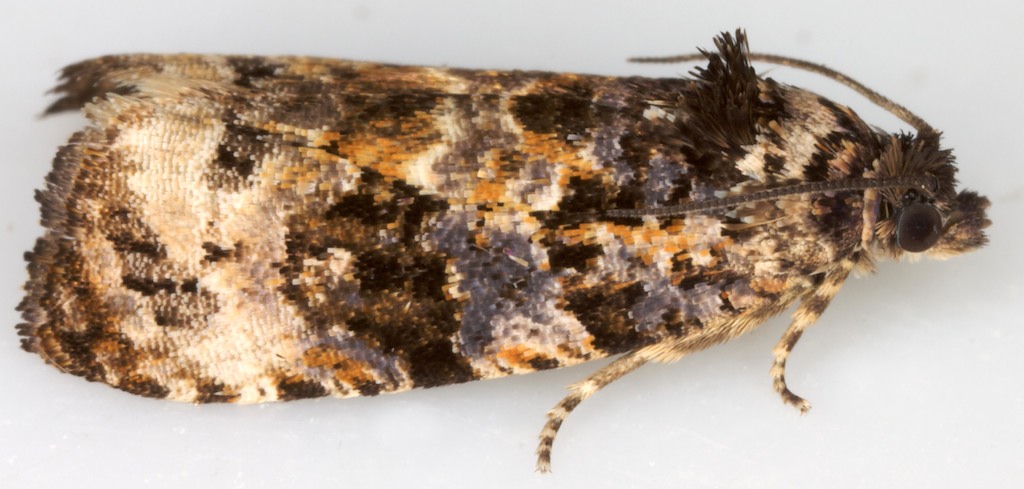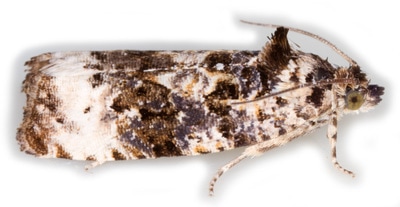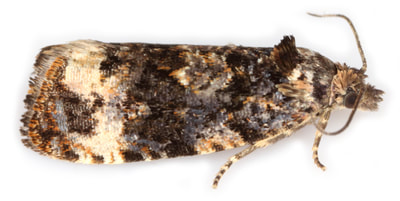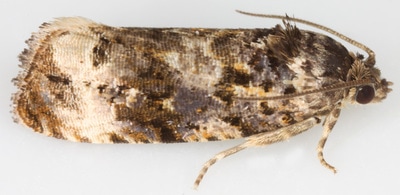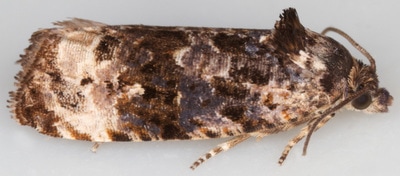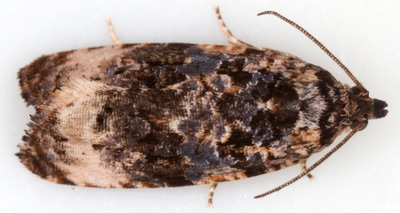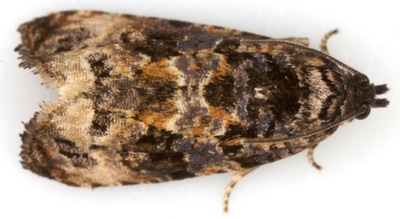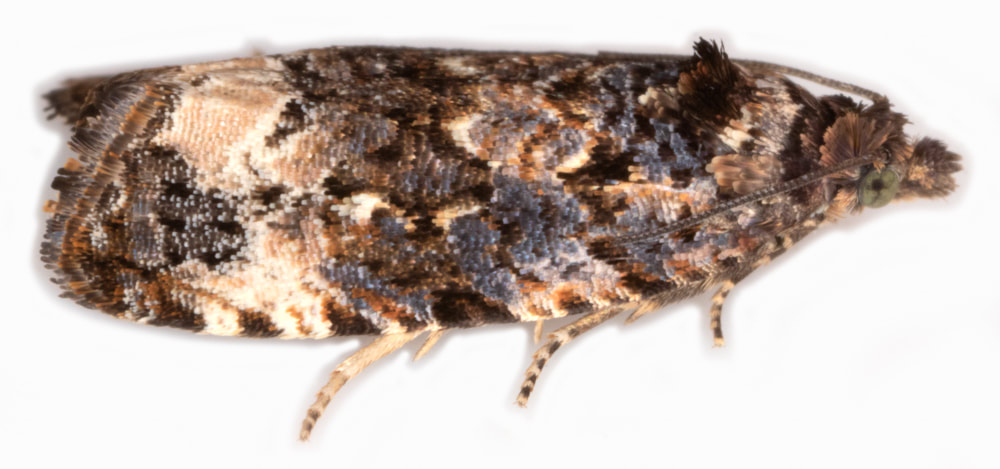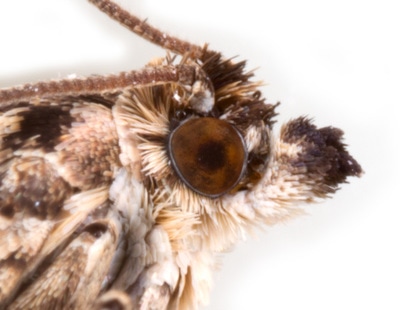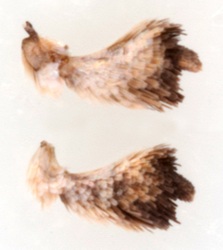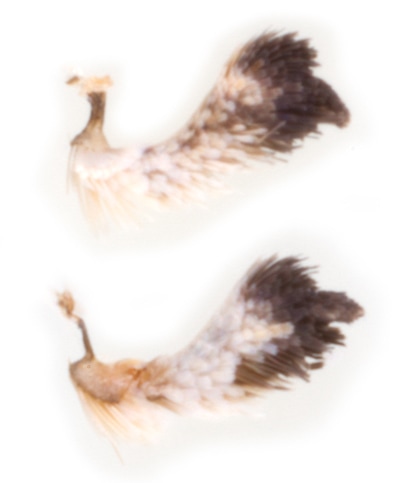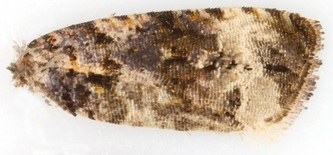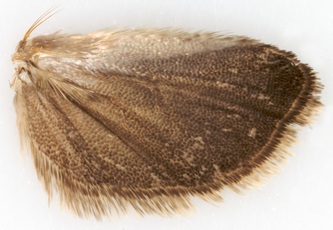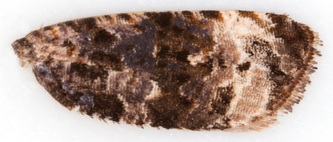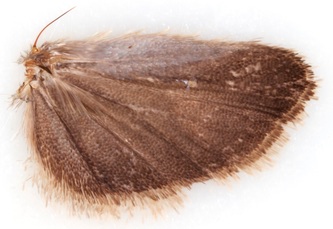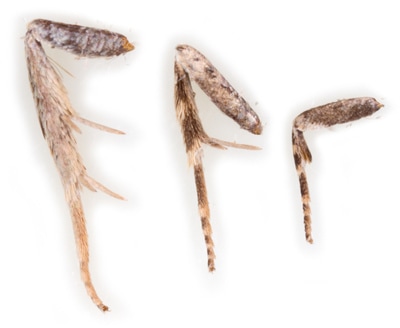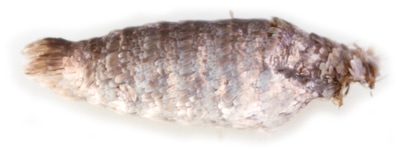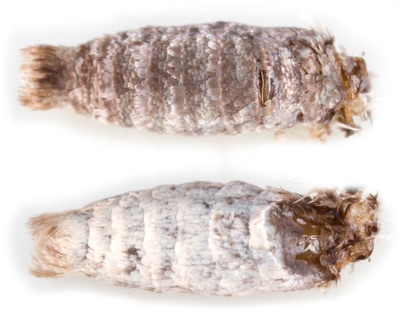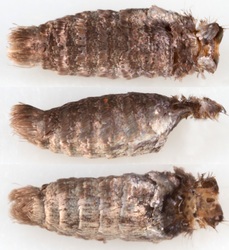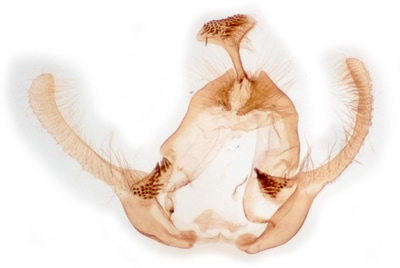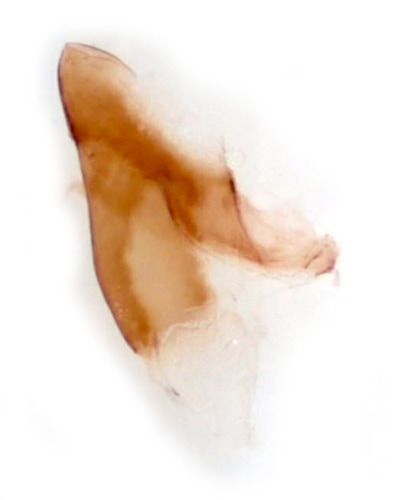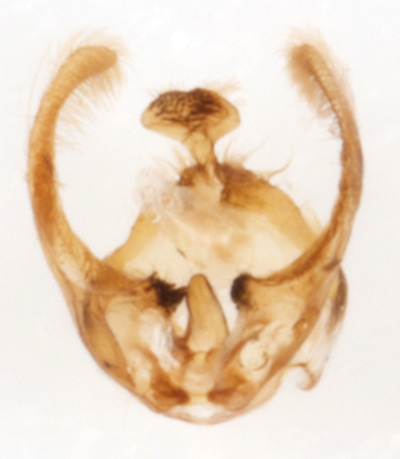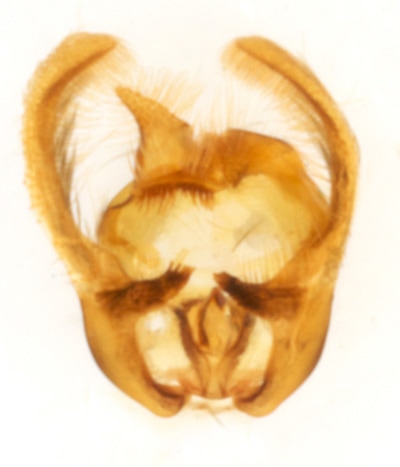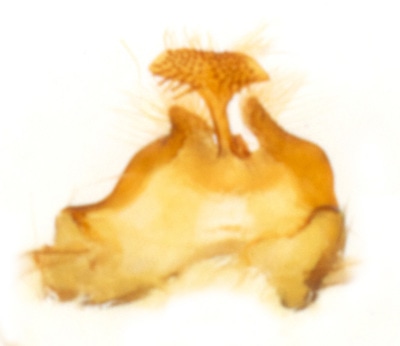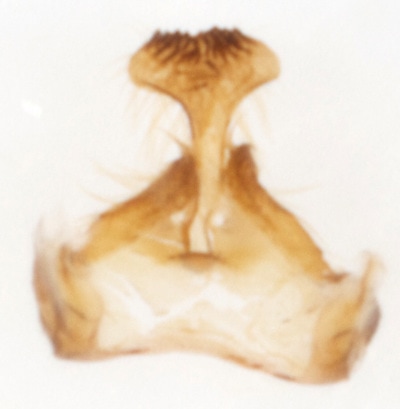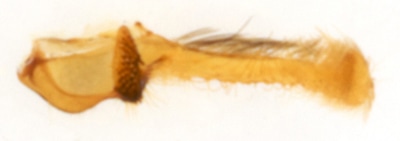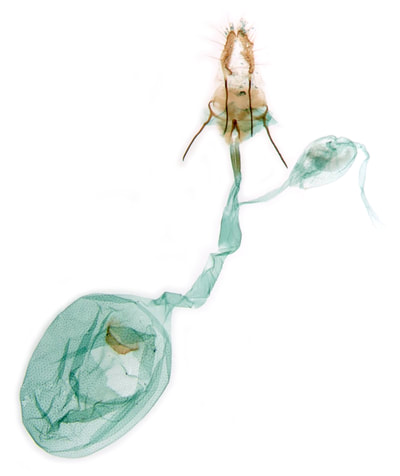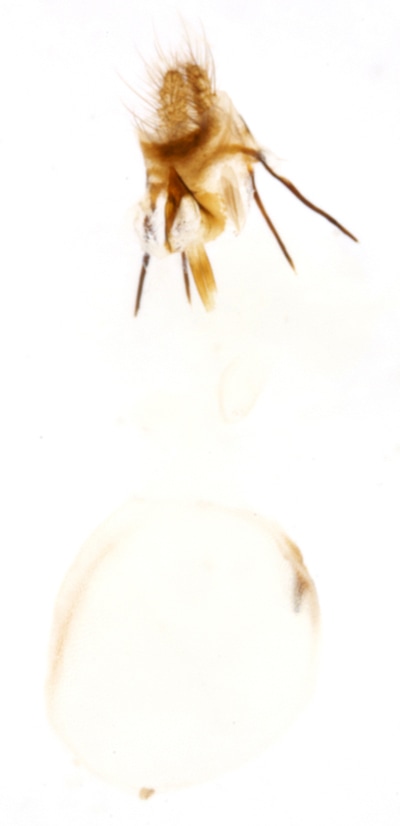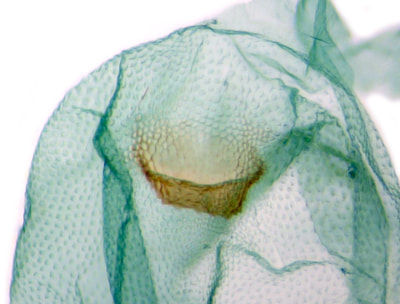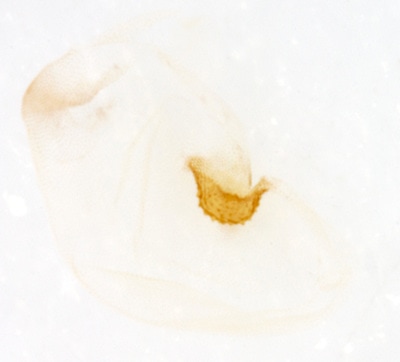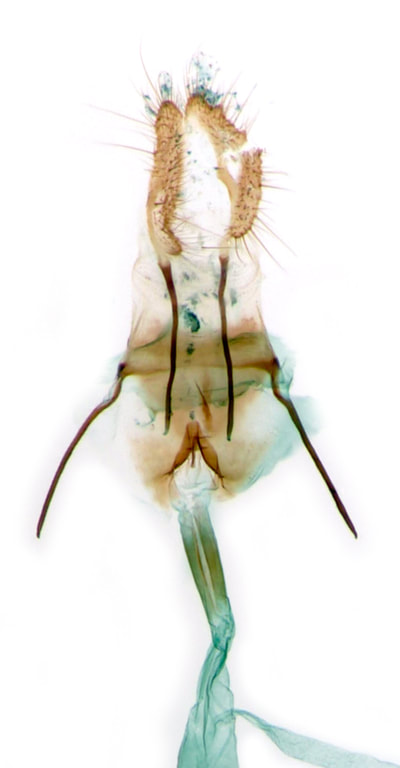49.186 Endothenia gentianaeana (Teasel Marble)
ws: 15-19mm (BTM), fw: 6-9mm (Sterling & Parsons); May-Aug; teasel (Dipsocus fullonum); common on rough ground in England & Wales
Synonym: Argyroploce gentiana (Pierce & Metcalfe)
Synonym: Argyroploce gentiana (Pierce & Metcalfe)
ID: Similar to E.oblongana (11-15m) and E.marginana (11-16mm) but usually larger than these species, so that specimens with fw>7mm should be E.gentianaeana. There is considerable variation in forewing markings especially in the extent of white irroration of the basal area and the extent of black spots in the markings. Males of E.marginana are distinct in having a white hindwing. Minor differences from its congeners in forewing pattern are mentioned in BTM and Clifton&Wheeler: more violet-grey in the basal half; a white spot at the distal margin of the median fascia; white subterminal fascia broad resulting in more white than dark distal to the median fascia.
Male genitalia: In E.gentianaeana and E.oblongana the aedeagus is without cornuti, in E.marginana the aedeagus has (~9 short stout) cornuti. In all three species there is a spined ventral extension of the sacculus; in E.gentianaeana and E.oblongana this extension is at ~1/3 of the valva so that the valva beyond the extension is relatively long, in E.marginana this extension is close to 1/2 of the valva so that the valva beyond the extension appears relatively short. In E.oblongana the uncus is rounded; in E.gentianaeana the uncus is also rounded but its posterior margin is indented (two of the images labelled as E.gentianaeana at Moth Dissection show a rounded uncus without indentation); in E.marginana the uncus is flattened. MBGBI5.2 also illustrates a small difference between the 3 species in the exact form of the saccular extension, but I have yet to be convinced that this is useful in distinguishing E.gentianaeana from E.oblongana.
Female genitalia: In E.gentianaeana and E.oblongana the posterior margin of the ostium is pointed; in E.marginana it is rounded. (As far as I have been able to establish): In E.gentianaeana the posterior margin of the ostium is pointed but not notched and the sclerotisation in the posterior part of the ductus bursae is separate from and weaker than the ostial sclerotisation. in E.oblongana the posterior margin of the ostium is pointed and notched at the point, and the sclerotisation in the posterior part of the ductus bursae is continuous with and about as strong as the ostial sclerotisation.
Male genitalia: In E.gentianaeana and E.oblongana the aedeagus is without cornuti, in E.marginana the aedeagus has (~9 short stout) cornuti. In all three species there is a spined ventral extension of the sacculus; in E.gentianaeana and E.oblongana this extension is at ~1/3 of the valva so that the valva beyond the extension is relatively long, in E.marginana this extension is close to 1/2 of the valva so that the valva beyond the extension appears relatively short. In E.oblongana the uncus is rounded; in E.gentianaeana the uncus is also rounded but its posterior margin is indented (two of the images labelled as E.gentianaeana at Moth Dissection show a rounded uncus without indentation); in E.marginana the uncus is flattened. MBGBI5.2 also illustrates a small difference between the 3 species in the exact form of the saccular extension, but I have yet to be convinced that this is useful in distinguishing E.gentianaeana from E.oblongana.
Female genitalia: In E.gentianaeana and E.oblongana the posterior margin of the ostium is pointed; in E.marginana it is rounded. (As far as I have been able to establish): In E.gentianaeana the posterior margin of the ostium is pointed but not notched and the sclerotisation in the posterior part of the ductus bursae is separate from and weaker than the ostial sclerotisation. in E.oblongana the posterior margin of the ostium is pointed and notched at the point, and the sclerotisation in the posterior part of the ductus bursae is continuous with and about as strong as the ostial sclerotisation.
§1 Foulness, Essex; 08/08/2010; male; fw 7.9mm
§2 Foulness, Essex; 15/08/2010; female; fw 8.2mm
§3 Foulness, Essex; 05/08/2012; fw 7.9mm; male
§4 Foulness, Essex; 20/07/2013
§5 Foulness, Essex; 28/05/2016; male
§6 Foulness, Essex; 26/08/2017; female; fw 8.8mm
§7 Foulness, Essex; 09/07/2022; female; fw 6.6mm
All images © Chris Lewis
§2 Foulness, Essex; 15/08/2010; female; fw 8.2mm
§3 Foulness, Essex; 05/08/2012; fw 7.9mm; male
§4 Foulness, Essex; 20/07/2013
§5 Foulness, Essex; 28/05/2016; male
§6 Foulness, Essex; 26/08/2017; female; fw 8.8mm
§7 Foulness, Essex; 09/07/2022; female; fw 6.6mm
All images © Chris Lewis
Page published 09/01/2013 (§1-2) | §3 added 03/02/2013 | §4 added 09/11/2013 | §5 added 13/05/2017 | Text amended 12/09/2022 |
§7 added 14/12/2022
§7 added 14/12/2022
